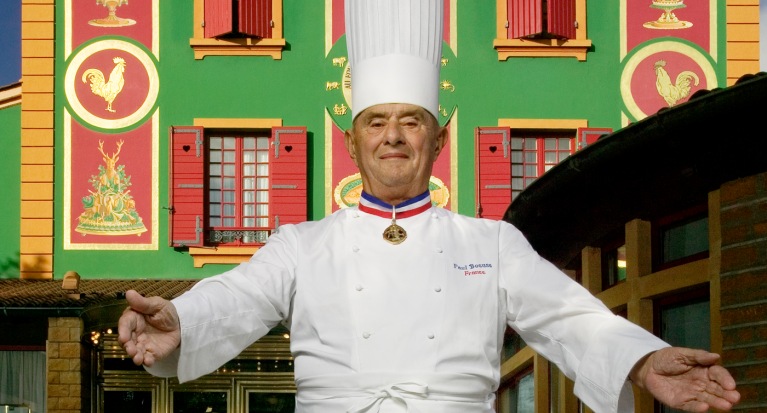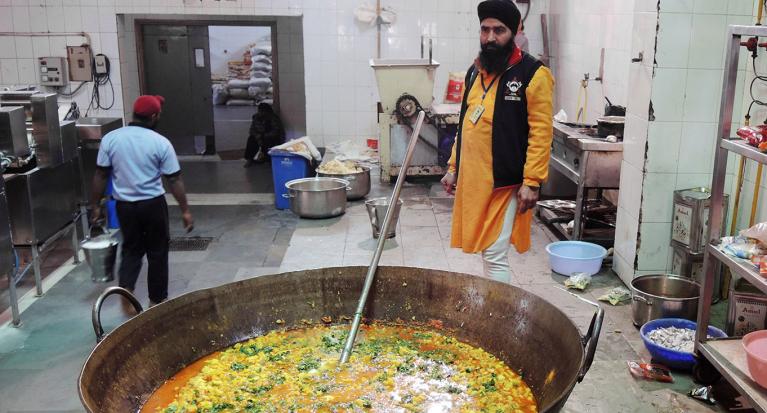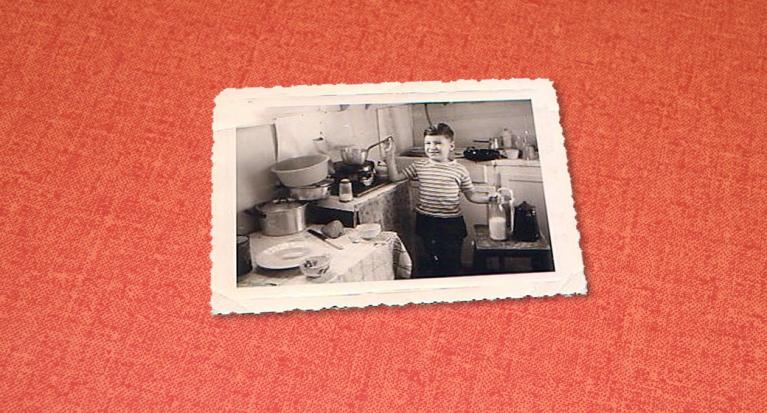Feast to forget food restrictions
Until the 20th century, the Church dictated what Europeans ate.
© Alimentarium/Print taken from the work by Antoine Carême, Le cuisinier parisien : l’Art de la cuisine française au 19e siècle, 1835, Paris : Ed. Carême/Bossange, p. 143." data-slide="http://www.ealimentarium.ch/sites/default/files/poisson-maigre-livre-recettes-beauvilliers-1814_detail.jpg"/>
A favourite on days of fasting: fish!
© Alimentarium/Print taken from the work by Antoine Carême, Le cuisinier parisien : l’Art de la cuisine française au 19e siècle, 1835, Paris : Ed. Carême/Bossange, p. 143.
Fasting, with all its theological virtues, is practised in most of the major religions. If today the Muslim Ramadan is the best known of these, it is because Christian societies have forgotten about the dietary restrictions dictated by the Catholic calendar. Days with food restriction and days of feasting shaped meals from the Middle Ages to the 20th century, and there were twice as many of the former as there were of the latter. This meant that in addition to recurrent food shortages, Europeans of the past had to adhere to rules that complicated what they ate on 150 to 250 days a year, depending on the region and their piety.
An act of penance
When Catholics fast, they do so to commemorate episodes in the life of Christ, the Virgin Mary or important saints. It is not, however, a question of fasting completely, but rather of eating “lean” foods that contain no meat products, and are conducive to sobriety, contemplation and sexual abstinence. In so doing, the devout set conditions to test their faith and help them on their path to salvation. Observance is expected particularly during the main liturgical celebrations, such as the Resurrection, the 40 days of Lent or Ash Wednesday. Since the Son of God was crucified on Good Friday, all Fridays were, for good measure, decreed days of abstinence, too. The most fervent also treated Wednesdays in the same way, in remembrance of Ash Wednesday.
It is forbidden…
... to eat meat, including lard and bacon, cream and butter on days of fasting, as well as eggs on the days deemed the most significant. Such food is served again on days of feasting and in even greater abundance during carnival, with warming fried specialities (deep-fried pastries and sweet fritters) during the months of January and February in preparation for the 40 days of Lenten penance that follow. It is probable that Reformers used this as a persuasive argument during their sermons in northern Europe: days of abstinence disappeared with Protestantism, in particular those at Lent. Indeed, the latter were exceptionally challenging, with animal fat (especially butter) out of bounds and winters still harsh. Unlike Mediterranean populations who could consume olive oil, which is plant based, northern Europeans did not have this option on days of abstinence, as olive oil was still unknown to them.
Fish and the torment of 'lean days'
For years, children dreaded the approach of Friday meals. At the canteen, at home or in restaurants, there was no getting away from fish, with its dreary meat full of bones. Even today, when serving fish on Fridays is scarcely observed for religious reasons, its relative persistence in secular society is quite remarkable. Out of respect for local customs, Asian and Oriental non-Christian restaurateurs also tend to serve fish as the dish of the day on Fridays, even though they are most likely completely oblivious of its religious meaning. As are probably the majority of Westerners, for that matter, who have forgotten that fish, unlike meat, is not only permitted on days of abstinence, but is also a symbol of Christ. In Greek, the first letters of the words that make up the phrase “Jesus Christ, Son of God, Saviour” spell the word “fish” in Greek (ichthus).
Get a taste of history
A huge kitchen lies at the heart of the Alimentarium Food Museum in Vevey. Visitors gladly pause here, their appetites whetted by the smell of food cooking; they watch the cooks working away over their pots and pans, ask them questions about the food they are preparing and, at mealtimes, come back to try a dish… and not just any dish. A piece of history is being showcased here in a form that is easy to grasp, delicious and a delight to behold. In 2011, meals were served in the Museum restaurant within the scope of an exhibition that focused on the relationship between nutrition and religion. The theme of one meal was a day of fasting and of another, a day of feasting. Chef Jean-François Wahlen and his team drew inspiration for the choice of ingredients and their preparation from recipes that were common from the late 18th century. The menu for a day of abstinence obviously had to avoid meat and animal fats, while the other menu took its cue from a day of feasting during carnival, when anything goes, including meat, poultry and especially fried food.
Menu for 'lean days': marinated fillet of halibut, herb sauce, boiled potatoes, steamed fennel julienne; for dessert: slivers of apple with lemon and meringue.
Menu for 'feast days': chicken roulade, bacon and cream sauce, potatoes sautéed in lard, beetroot flan; for dessert: deep-fried pastries.
DOSSIER Food as a Status Symbol |
Churning butter the old-fashioned way
The churn used during the demonstration comes from the museum’s collection. It dates from around 1930 and was used by people in their homes. Accepted practice was for butter to be specially churned for Sunday, a day of feasting.
Once the butter had been made into a slab, it could either be consumed as it was or, especially if it was to be sold, packed into a mould with an embossed symmetrical pattern. This pattern became visible when the butter was removed from the mould.. The buyer could then tell at a glance if the butter was whole or if a piece had been cut off! For a long time, butter was expensive, which made it tempting to cheat slightly on the quantity when selling it.








